Chinese sculpture is an important part of Chinese culture. From ancient pottery and clay sculptures, to bronze ritual vessel terracotta warriors and horse sculptures to today’s urban sculptures, each period has its own splendor. Do you know what are the famous Chinese sculptures? Who are the representatives of Chinese sculpture? This article brings you the top ten sculptures in China.
1. Zhuhai Fisher Girl Statue珠海渔女雕像
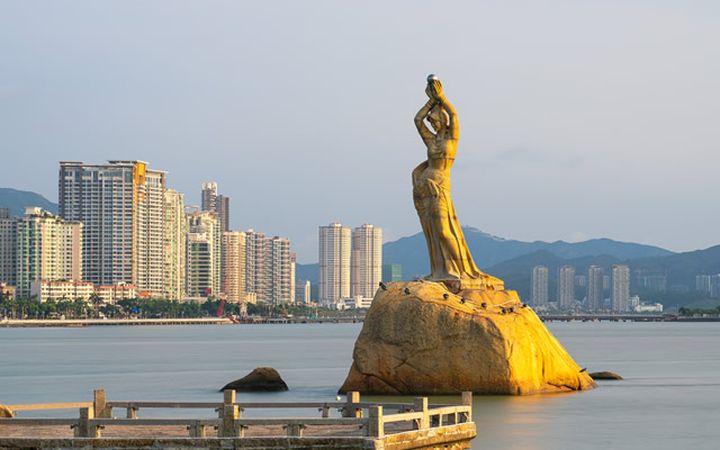
Address: No. 63, Lovers Middle Road, Xiangzhou District, Zhuhai City, Guangdong Province
2. Sanya Nanhai Guanyin三亚南海观音
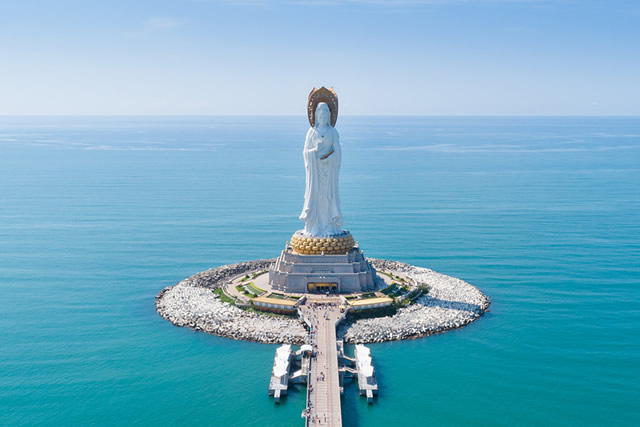
3. Central Plains Giant Buddha中原大佛
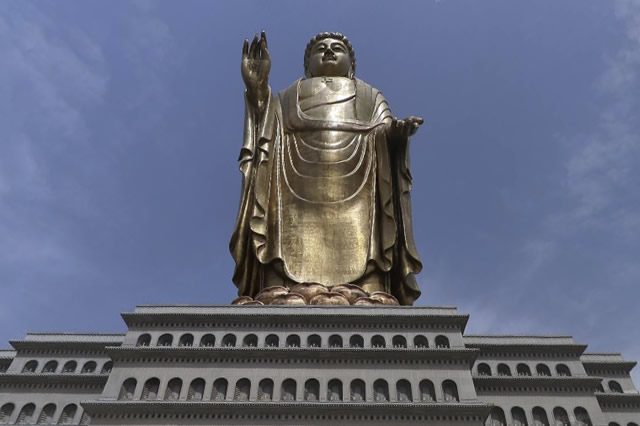
4. Lushena Buddha卢舍那大佛
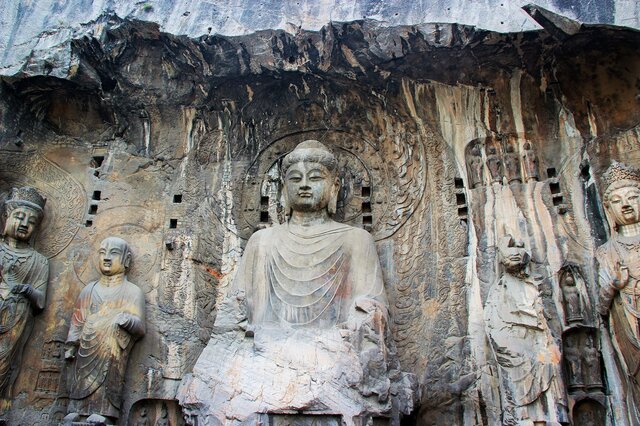
5. Statue of the Maid in Jinci Temple of Our Lady晋祠圣母殿侍女像
“Portrait of a Maid in Jinci Temple of Our Lady”, painted sculpture, made in the Yuanyou period of the Northern Song Dynasty, around 1082, located in Jinci Temple of Our Lady, 25 kilometers southwest of Taiyuan City, Shanxi Province. There are more than forty painted statues in the Notre Dame Hall, all of which were works of the Northern Song Dynasty. The seated statue of the Virgin is in the center, 2.28 meters high, with a phoenix crown and a python robe, dignified and magnificent, surrounded by many female officials and maids. Their movements and postures are different, and their facial expressions and personalities are all portrayed very vividly and naturally. They are the most outstanding group of figures in Jinci colored sculptures.
6. Clay Boy泥孩儿
Clay toys in the Song Dynasty. Clay toys were very popular in the Song Dynasty. Although the clay figurines are small, they are exquisite and vivid. They provide research materials for the art, folklore and costumes of the Song Dynasty. According to Meng Yuanlao’s “Tokyo Menghualu” in the Song Dynasty, every Tanabata festival in Tokyo in the Northern Song Dynasty, the streets “sell mills and drink music, and they are small plastic clay and occasional ears. They are all decorated with carved wood and colored cages, or decorated with red gauze and green cages, or decorated with There is a pair of gold, pearls and teeth that are worth thousands of dollars.” Mud boys in the Song Dynasty were very valuable at that time.
7. Bodhisattva with palms together and toothy in Huayan Temple华严寺合掌露齿菩萨
Huayan Temple’s palm-toothed Bodhisattva is located in the Bodhisattva Tibetan Hall of Huayan Temple. This statue was praised by Guo Moruo as the Oriental Venus. The four great Bodhisattvas sit on the Ascension Throne in lotus lotus with a demure and dignified demeanor. The rest of the statues are also richly decorated with natural postures. At the four corners stands a Dharma Guardian Vajra, majestic, majestic and majestic. Among them, the Bodhisattva with folded palms and bared teeth (as shown on the right) is the most vivid, with a plump face, a beautiful figure, and a smile with folded palms, which is graceful and moving. It is a treasure of the painted sculpture art of the Liao Dynasty.
8. Drumming and singing pottery figurines of the Eastern Han Dynasty东汉击鼓说唱陶俑
The drumming and singing pottery figurines of the Eastern Han Dynasty were unearthed in 1957 from the Hanya Tomb in Tianhui, Chengdu City, Sichuan Province. They are Ming artifacts of the Eastern Han Dynasty and are now in the National Museum of China. The terracotta figurine is 56 centimeters high and is made of muddy gray pottery. It wears a headband on its head, has high shoulders, wears trousers and is barefoot. Lively the image of a comedian rapping. The drumming and singing pottery figurines of the Eastern Han Dynasty are called “the first figurines of the Han Dynasty”.
9. Bronze Galloping Horse铜奔马
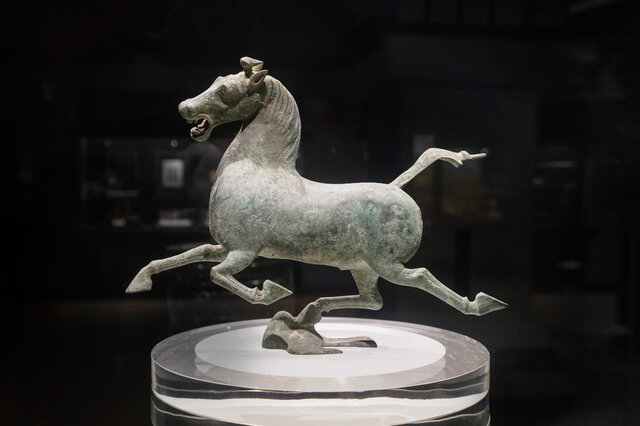
10. Difficult years艰苦岁月
“Difficult Years” is a cast bronze sculpture created by Pan He in 1956, 47×40×55㎝, which was collected by the National Art Museum of China in 1956. “The Difficult Years” successfully reflects the spirit of revolutionary optimism in the war years and the belief in yearning for the victory of the revolution through the old soldiers playing the flute and the young soldiers snuggling up and listening. In the triangular composition, the volume is undulating, the technique is free, and the artistic image is vivid, natural and touching. It is truly a classic work in the 1950s.